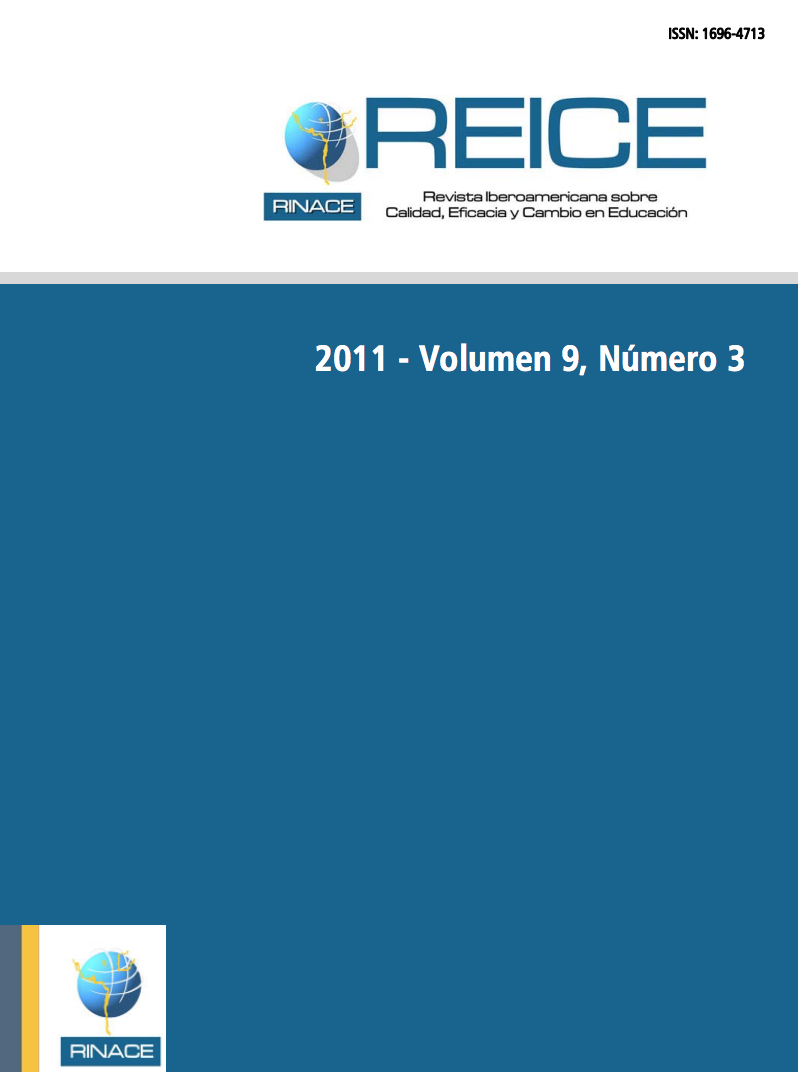Analysis and Description of the Perceptions of Leadership and Leadership Distributed Resilient Around the Exercise of Directors (2.0) as Possible Ways to Apprehend and Transform Educational Institutions
Keywords:
Resilient leadership, distributed leadership, ICT integration, climate and organizational cultureCopyright (c) 2023 REICE. Ibero-American Journal on Quality, Effectiveness and Change in Education

This work is licensed under a Creative Commons Attribution-NonCommercial-NoDerivatives 4.0 International License.
Abstract
There is no doubt that the role of school principals and the exercise of leadership have changed over time and especially in our present time configured around the Knowledge Society. The changes are dizzying and to establish a balance between external demands and the school's own educational leader (2.0) has to consider the virtues that enables the exercise of a resilient and distributed leadership to include ICTs to the methodological change. Thus the figure of the director develops a vision focused on the individual manager, authoritative, dynamic, competent and effective to one that notes impatient achievement and collective involvement in a shared project based on nodal management and decision decisional merged and united. A new model involving a new school culture based on joint action and reflective opening proposals that generate a climate of trust and harmony. Our development suggests, from the reflection, the contribution of ideas to facilitate the exercise and understanding of new forms of educational leadership to adapt to the future present and to demonstrate the need for change and innovation in management and school management.Downloads
References
Ainscow, M. (2008). Garantizar que cada alumno es importante: la mejora de la equidad dentro los sistemas. En: Gairín, J. y Antúnez, S. Organizaciones educativas al servicio de la Sociedad. Barcelona: Wolters Kluwer.
Bernard, B. (1991). Fostering Resiliency in Kids: Protective Factors in the Family, School, and Communty, San Francisco: WestEd Regional Educational Laboratory.
Cayulef, C. (2007). El liderazgo distribuido. Una apuesta de dirección escolar de calidad. REICE. Revista electrónica Iberoamericana sobre Calidad, Eficacia y Cambio en Educación, 5 (5), pp. 144-148.
Fainholc, B. (2010). La formación científico-tecnológica digital en educación superior. Revista de Universidad y Sociedad del Conocimiento (RUSC), 7 (2). UOC. [Fecha de consulta: 14/10/2010]. http://rusc.uoc.edu/ojs/index.php/rusc/article/view/v7n2-fainholc/v7n2-fainholc.
Gairín, J. (2009). Cambio y mejora. La innovación en el aula, equipo de profesores y centro. En: Paredes, J. y de la Herrán, A. (coords). La práctica de la innovación educativa. Madrid: Editorial Síntesis.
González, R. (2010). Liderazgo resiliente: un nuevo paradigma en el perfil del líder. Capital Humano, 240, pp. 28-30.
Gronn, P. (2000). Distributed Properties: A new architecture for leadership. Educational Management and Administration, 28 (3), pp. 317-338.
Grotberg, E. (1997). La resiliencia en acción. Trabajo presentado en el Seminario Internacional sobre Aplicación del Concepto de Resiliencia en Proyectos Sociales, Universidad Nacional de Lanús, Fundación Van Leer.
Hawkins, J. D. y Catalano, R. F. (1990). 20 Questions: adolescent Substance Abuse Risk Factors (material audio), Seattle, WA: Developmental Research and Programs.
Henderson, N.; Milstein, M.M. (2003). Resiliencia en la Escuela. Barcelona: Paidós Ibérica S.A.
Jericó, P. (2010). Directivos 2.0 ¿Preparado para la era de la colaboración?. Capital Humano, 240, pp. 42-45. Madrid: Wolters Kluwer.
López, J. y Lavié, J.M. (2010). Liderazgo para sostener procesos de innovación en la escuela. Profesorado: Revista de currículum y formación del profesorado, 14 (1). pp. 71-92.
Santos, M A. (2009). Equipos directivos e innovación. En: Paredes, J. y de la Herrán, A. (coords). La práctica de la innovación educativa. Madrid: Editorial Síntesis.
Santos, M.A. (coord.) (2005). Escuelas para la democracia. Cultura, organización y dirección de instituciones escolares. Santander: Gobierno de Cantabria.
Shirky, C. (2008). Here Comes Everybody: The power of Organizing without Organizations. Nueva York: The Penguin Press.
Vilar Martín, J. (2009). Crear en la esfera local un mundo más humanizado y acogedor. El trabajo en red y la acción comunitaria. Escuela: Redes sociales, municipalidad y desarrollo educativo, monográfico de mayo.
Waite, D.(2008). L as limitaciones de nuestras formas organizativas. En: Gairín, J. y Antúnez, S. Organizaciones educativas al servicio de la Sociedad. Barcelona: Wolters Kluwer.
Weber, M. (1958). The protestant Ethic and the Spirit of Capitalism. Nueva York: Scribner.
